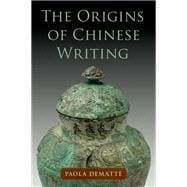This study explores the evidence for Chinese writing in the late Neolithic (3500-2000 BCE) and early Bronze Age (2000-1250 BCE) periods. Chinese writing is often said to have begun with little incubation during the late Shang period (c. 1300-1045 BCE) in the middle-lower Yellow River Valley area as a sudden independent invention. This explanation runs counter to evidence from Mesopotamia, Egypt, and Mesoamerica that shows that independent developments of writing generally undergo a protracted evolution. It also ignores archaeological data from the Chinese Neolithic and early Bronze Age that reveals the existence of signs comparable to Shang characters.
Paola Demattè takes this data into account to address the issue of what writing is, and when, why, and how it develops, by employing a theory of writing that does not privilege language as a prime mover. It focuses instead on visual systems of communication as well as ideological and socio-economic developments as key elements that promote the eventual development of writing. To understand the processes that led to primary developments of writing, The Origins of Chinese Writing draws from the latest research on the early writing systems of Mesopotamia, Egypt, and Mesoamerica, and other forms of protowriting. The result is a novel and inclusive theoretical approach to the archaeological evidence, grammatological data, and textual sources, an approach that demonstrates that Chinese writing emerged out of a long process that began in the Late Neolithic and continued during the Early Bronze Age.








